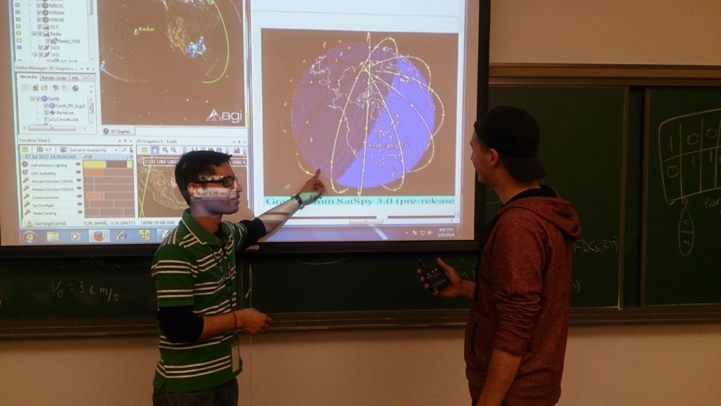Galaxies of data: Analytics opens new aerospace frontiers
December 21, 2017Astrophysicist Carl Sagan was famous for his use of the word “billions.” As he liked to remind viewers of the TV show Cosmos, a galaxy is composed of billions upon billions of stars.
If he were still around today, Sagan might turn his attention to another large unit of measurement: the gigabyte. Astronomers, astrophysicists, space engineers, and the aviation industry are all increasingly interested in collecting large amounts of data – gigabytes worth of it.
Back in 2012, Nick Skytland, a blogger for the national space agency, wrote, “In the time it took you to read this sentence, NASA gathered approximately 1.73 gigabytes of data from our nearly 100 currently active missions!” Just imagine how much more data they gather now.
“We do this every hour, every day, every year – and the collection rate is growing exponentially. Handling, storing, and managing this data is a massive challenge,” he wrote.
NASA uses that data for a myriad of purposes, ranging from space weather predictions to optimizing payloads during rocket launches.
“Our data is one of our most valuable assets,” said Skytland, “and its strategic importance in our research and science is huge. We are committed to making our data as accessible as possible, both for the benefit of our work and for the betterment of humankind through the innovation and creativity of the over seven billion other people on this planet who don’t work at NASA.”
Outside of NASA, private space companies such as Orbital and Space-X are also keen to harness the power of data. Gathering and correctly interpreting the data can be crucial to everything from manufacturing processes to deciding on launch dates.
However, data-driven decision making requires more than just the ability to harvest raw numbers. It requires professionals with analytical skills who can draw accurate conclusions from the vast quantities of incoming information.
 Equipping professionals with data analytics skills is the mission of Capitol Technology University’s new undergraduate and graduate degree programs in business analytics, unveiled this month with enrollment open now for the Fall 2018 semester.
Equipping professionals with data analytics skills is the mission of Capitol Technology University’s new undergraduate and graduate degree programs in business analytics, unveiled this month with enrollment open now for the Fall 2018 semester.
“Business analytics is the degree right now,” says Dr. Michael Fain, Director of Doctoral Programs for Capitol Technology University. “It is cutting edge. It subscribes to best practices. Whatever formulas business leaders are using to guide their strategic plans – whether those plans be for one year or five years – only when they begin using concepts and paradigms involving data analytics can real, substantive decision-making emerge.”
For aspiring business analysts with a particular interest in the space arena, Capitol offers the advantage of close connections to NASA as well as to private firms such as The Hammers Company, which recently established a new Space Flight Operations Training Center on the Capitol campus.
The university has a longstanding relationship with NASA, partnering with them on projects like our recent Cactus-1 satellite mission as part of NASA’s CubeSat Launch Initiative. And our location, right in between Baltimore and Washington D.C., is nearby the NASA Goddard Space Flight Center.
“Capitol has an ongoing commitment to partnering with federal agencies and the private sector in order to keep abreast of specific needs in the field,” said the university’s chief academic officer, Dr. Helen Barker. “We use that to shape the curricula in our programs, including business analytics.”
Capitol is offering three degrees in business analytics: a bachelor of science in business analytics at the undergraduate level, an MBA in business analytics, and a doctorate level PhD. The doctoral degree is offered online, making it a perfect fit for aerospace engineers and other professionals seeking to boost their analytics skills.
To learn more about NASA’s need for data engineers click here to read Skytland’s article.


